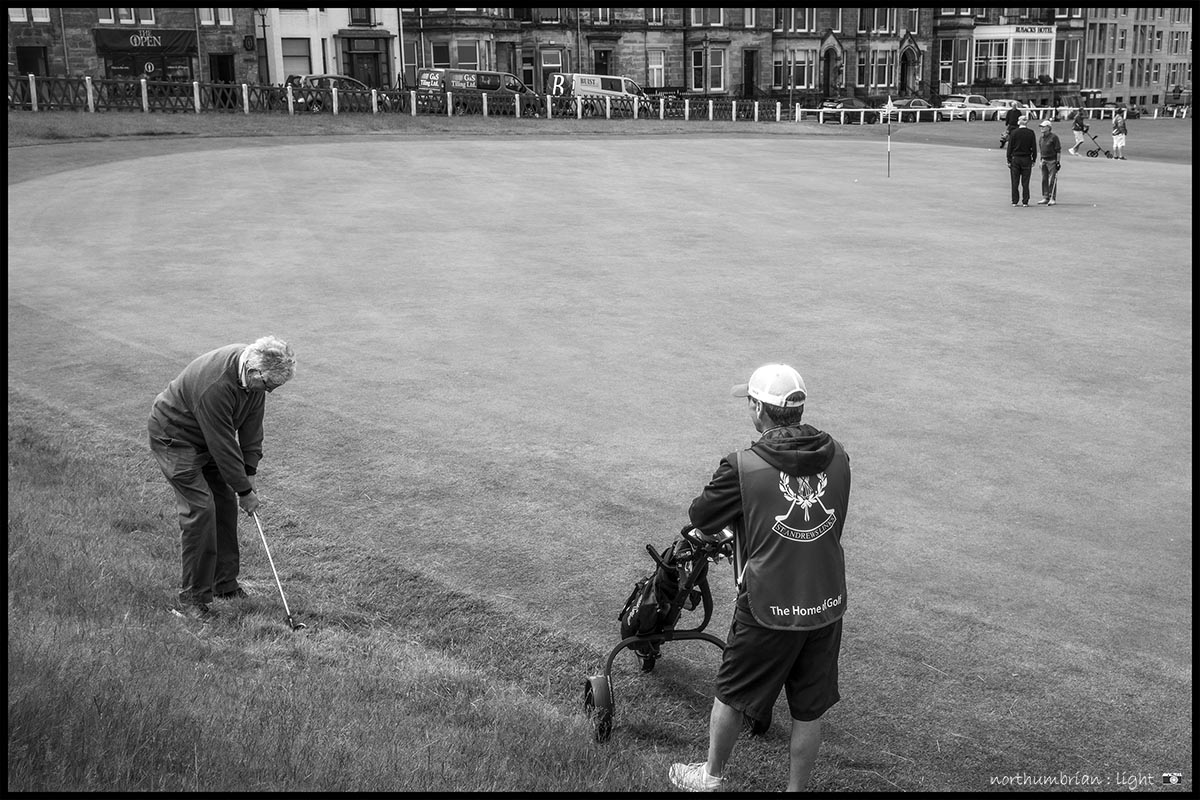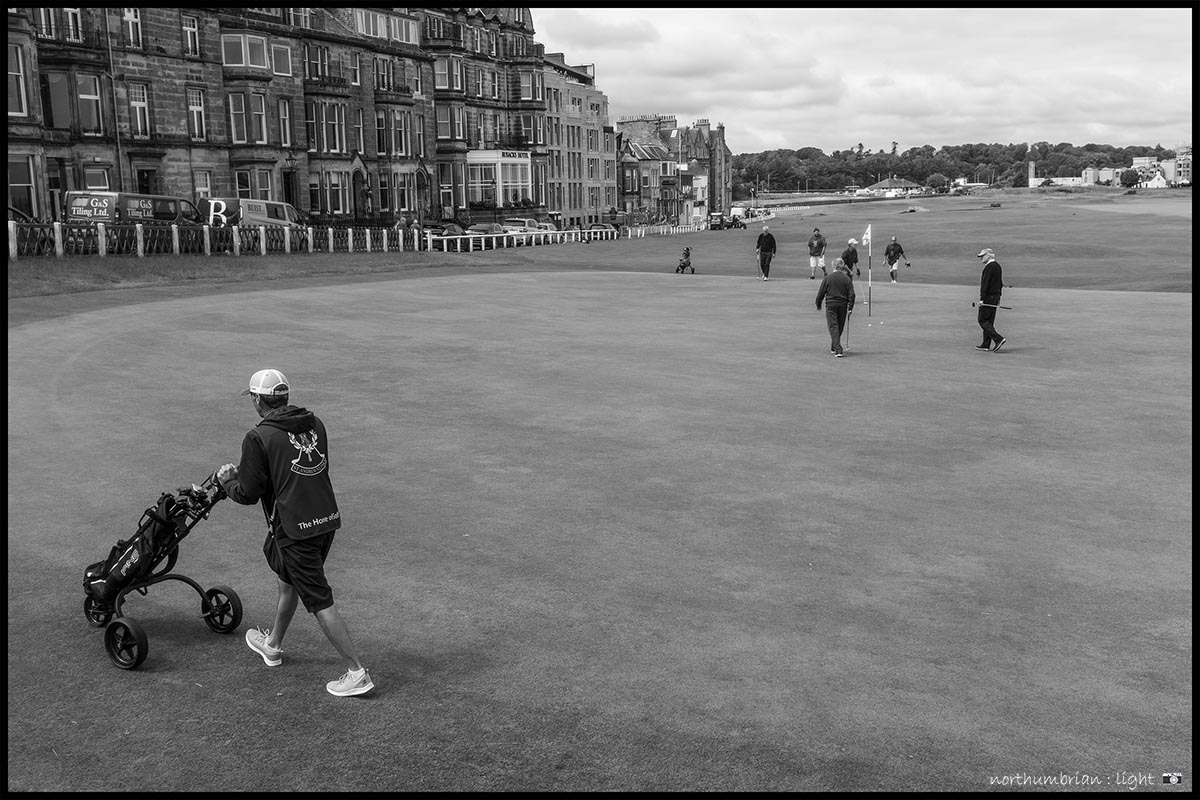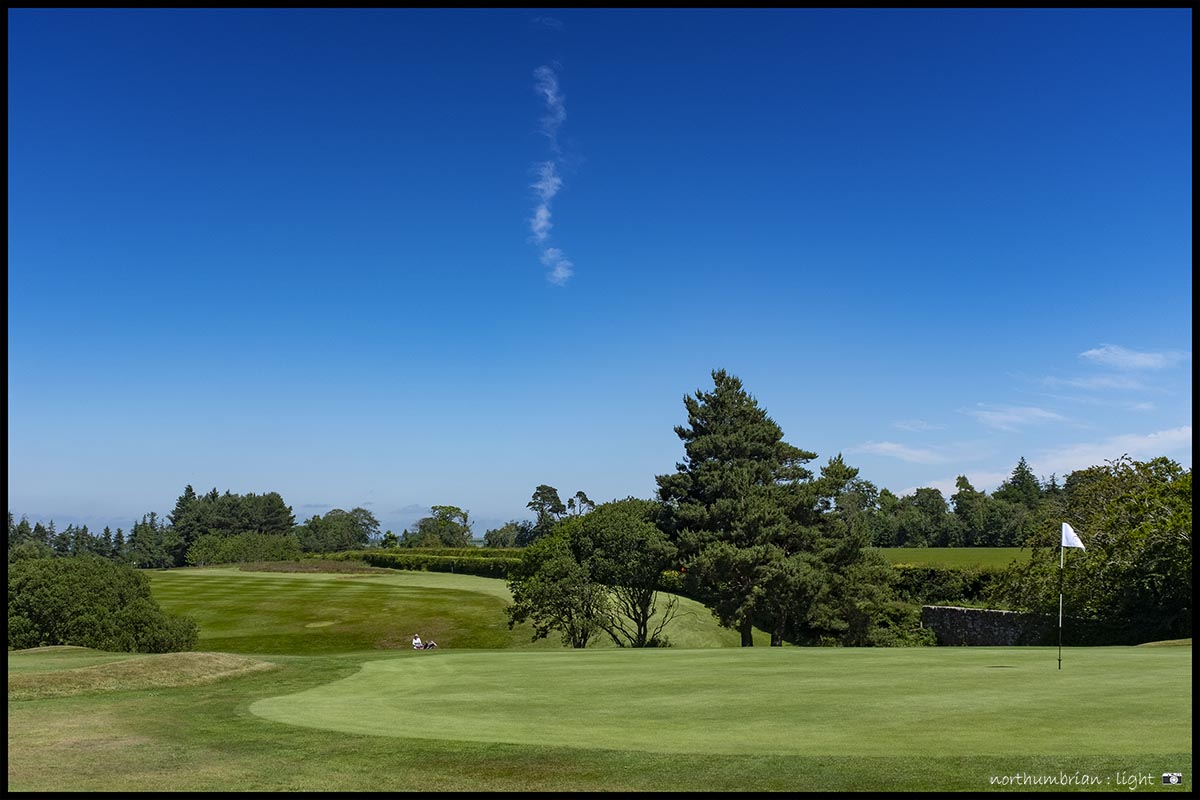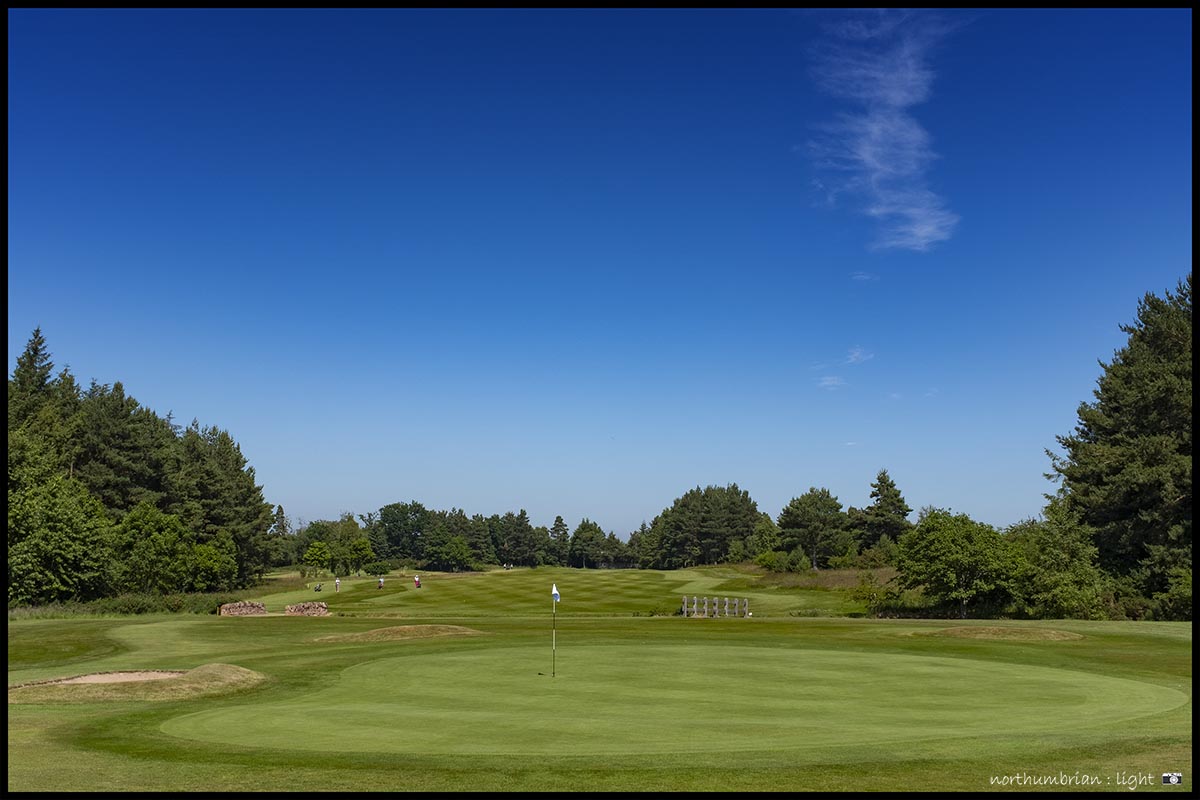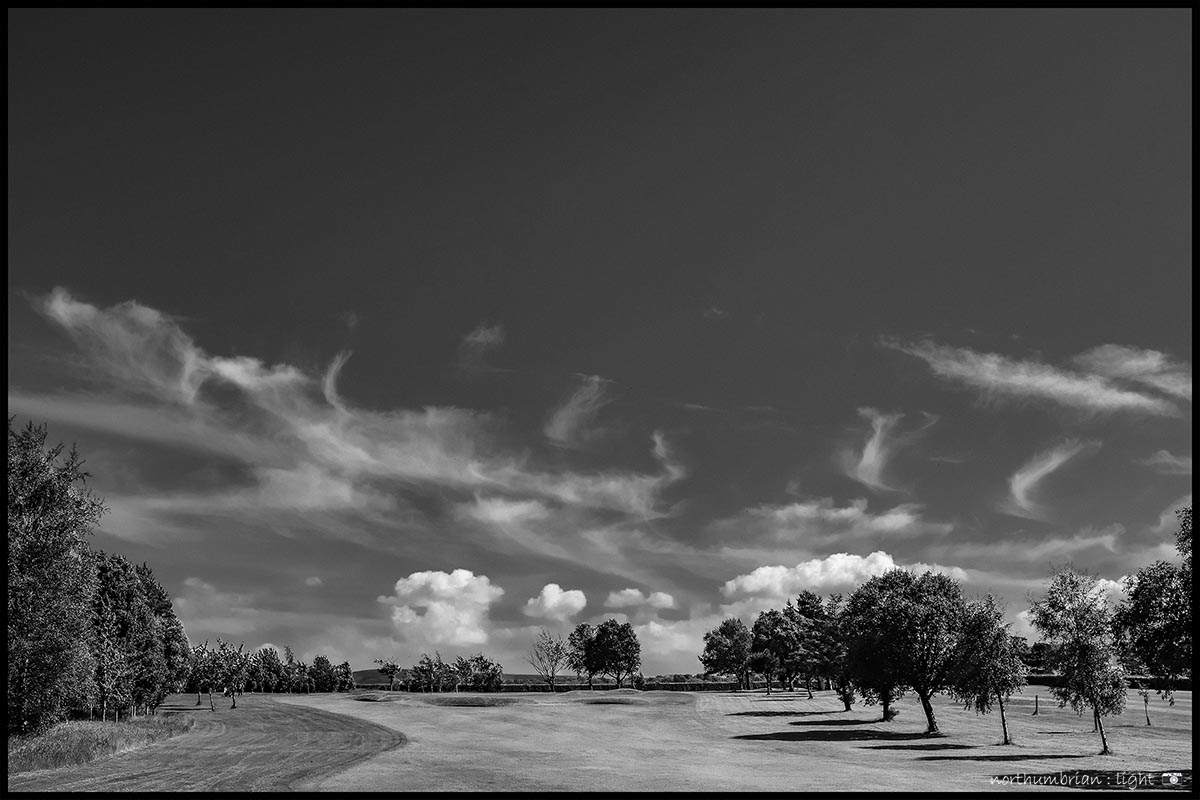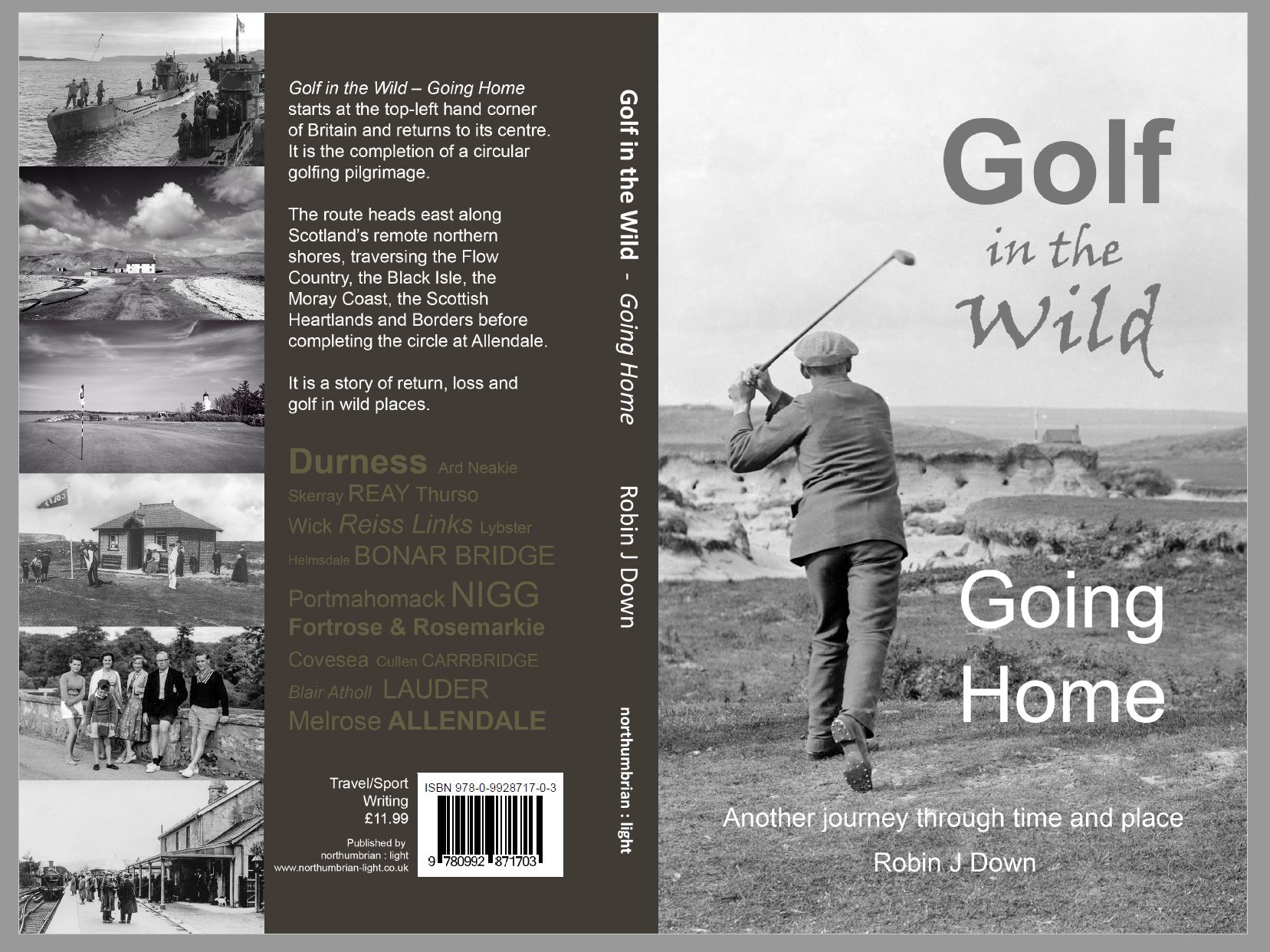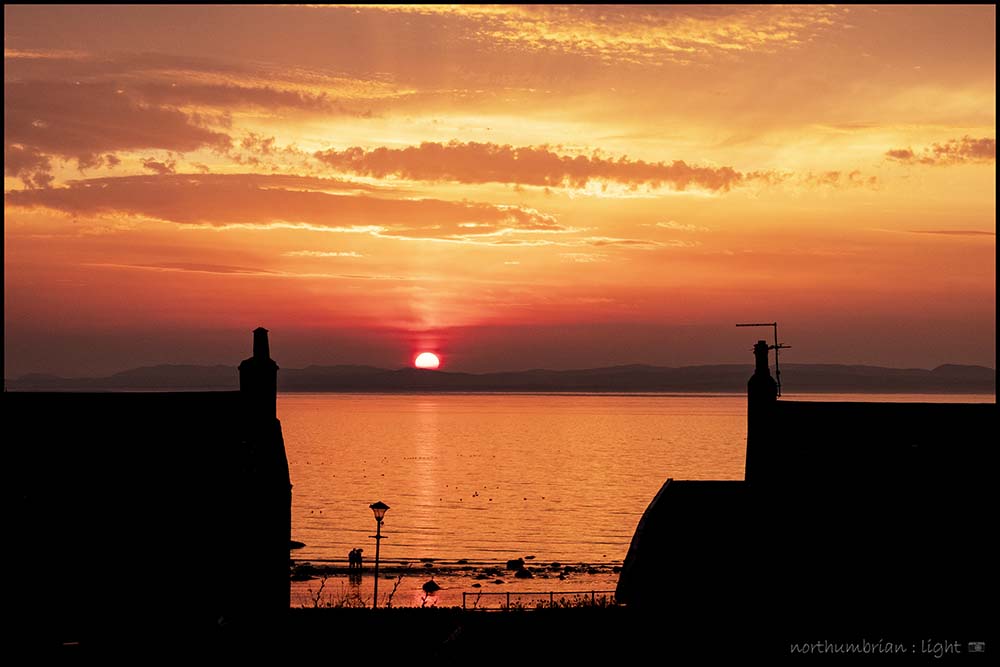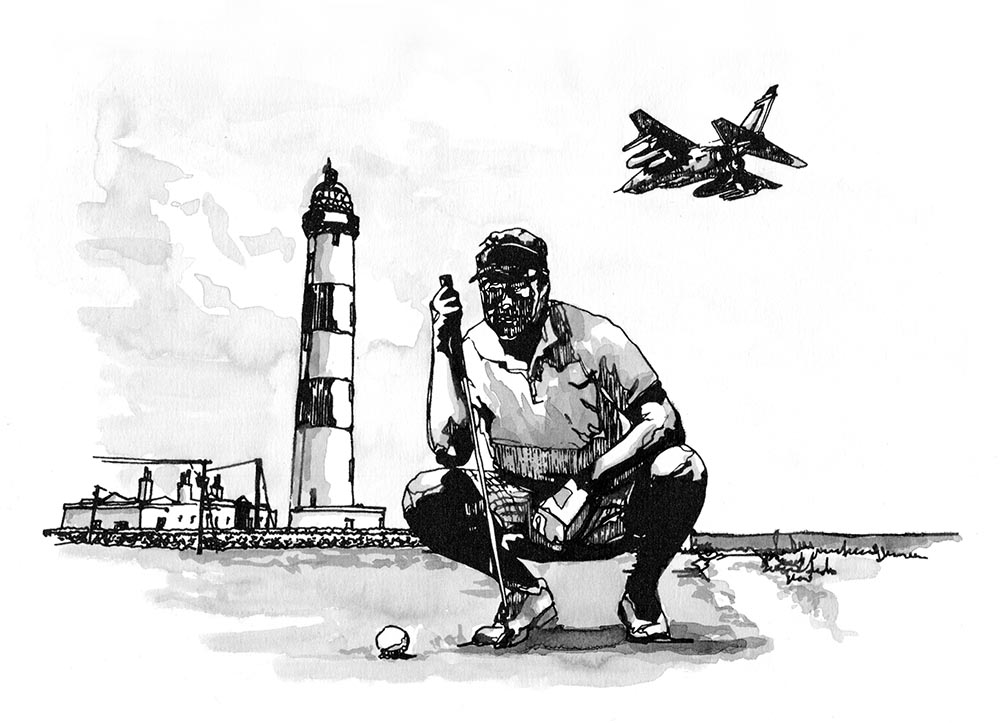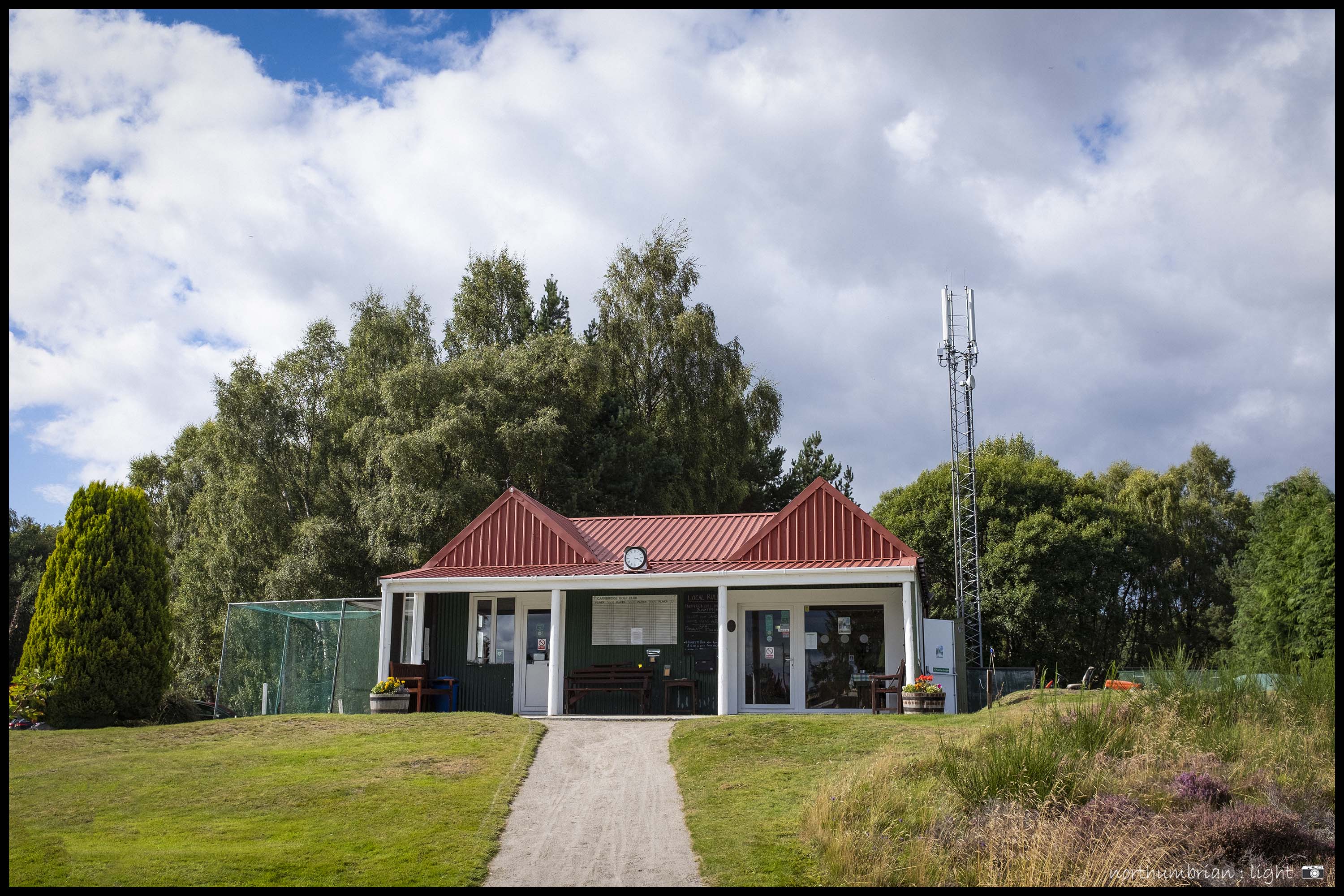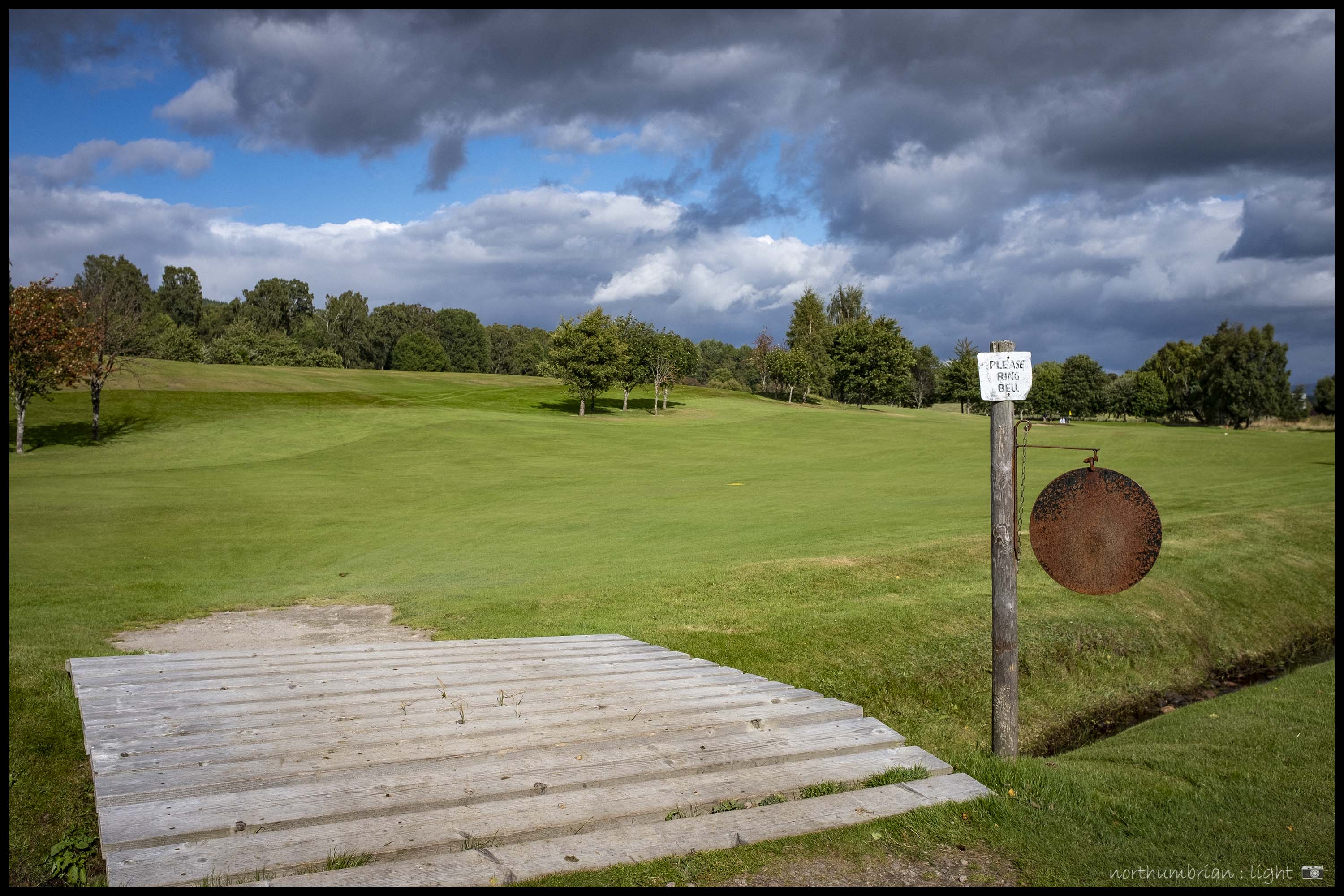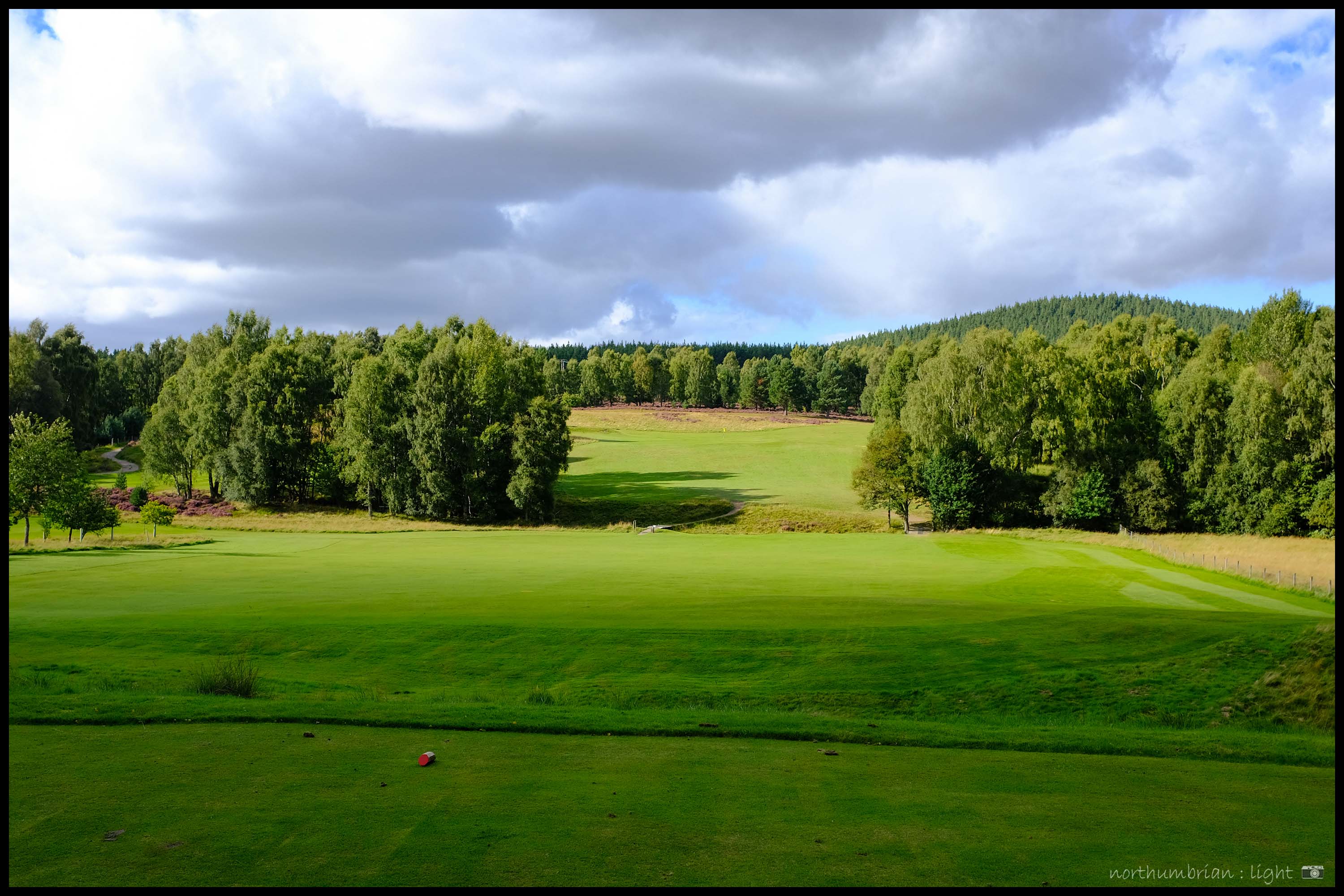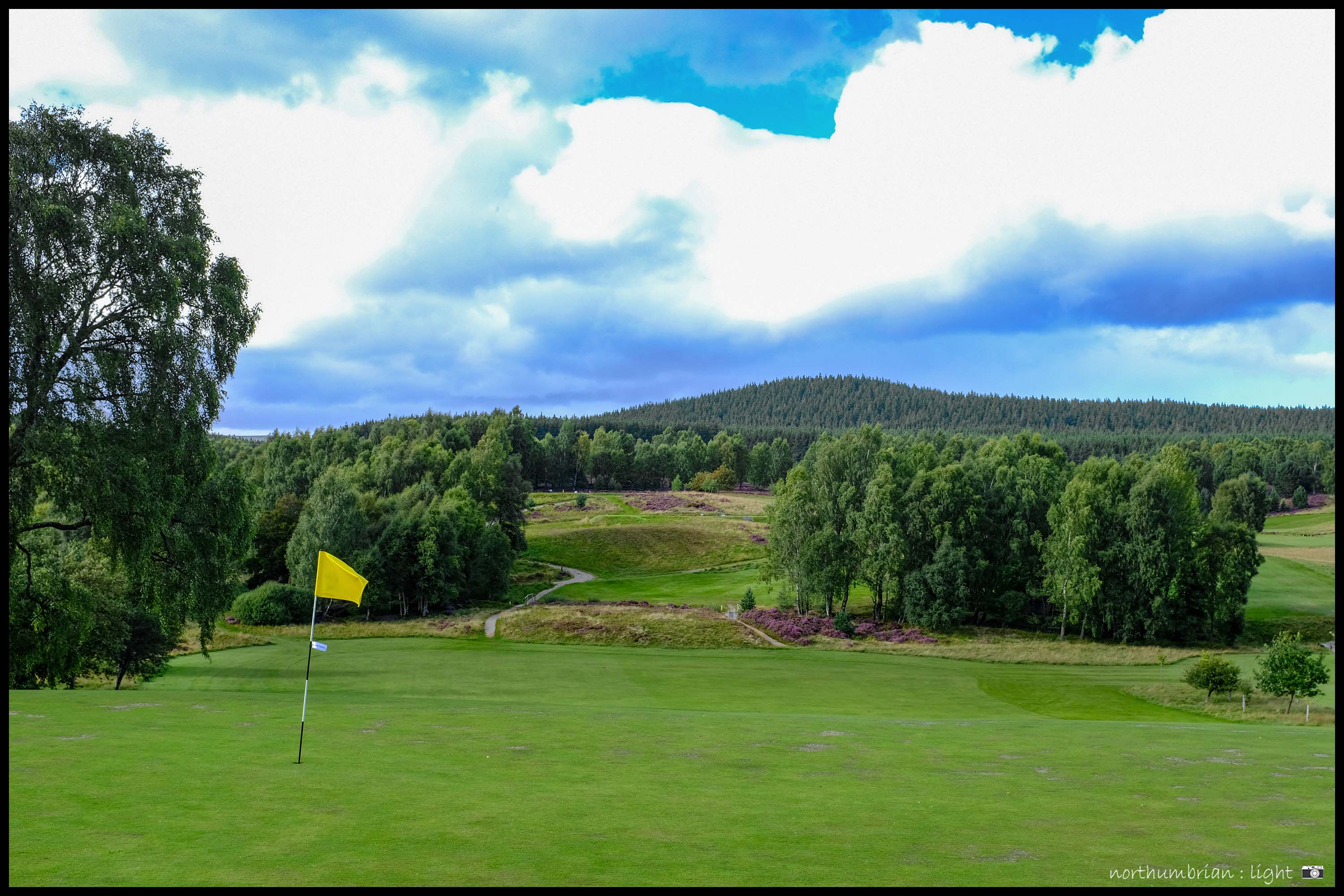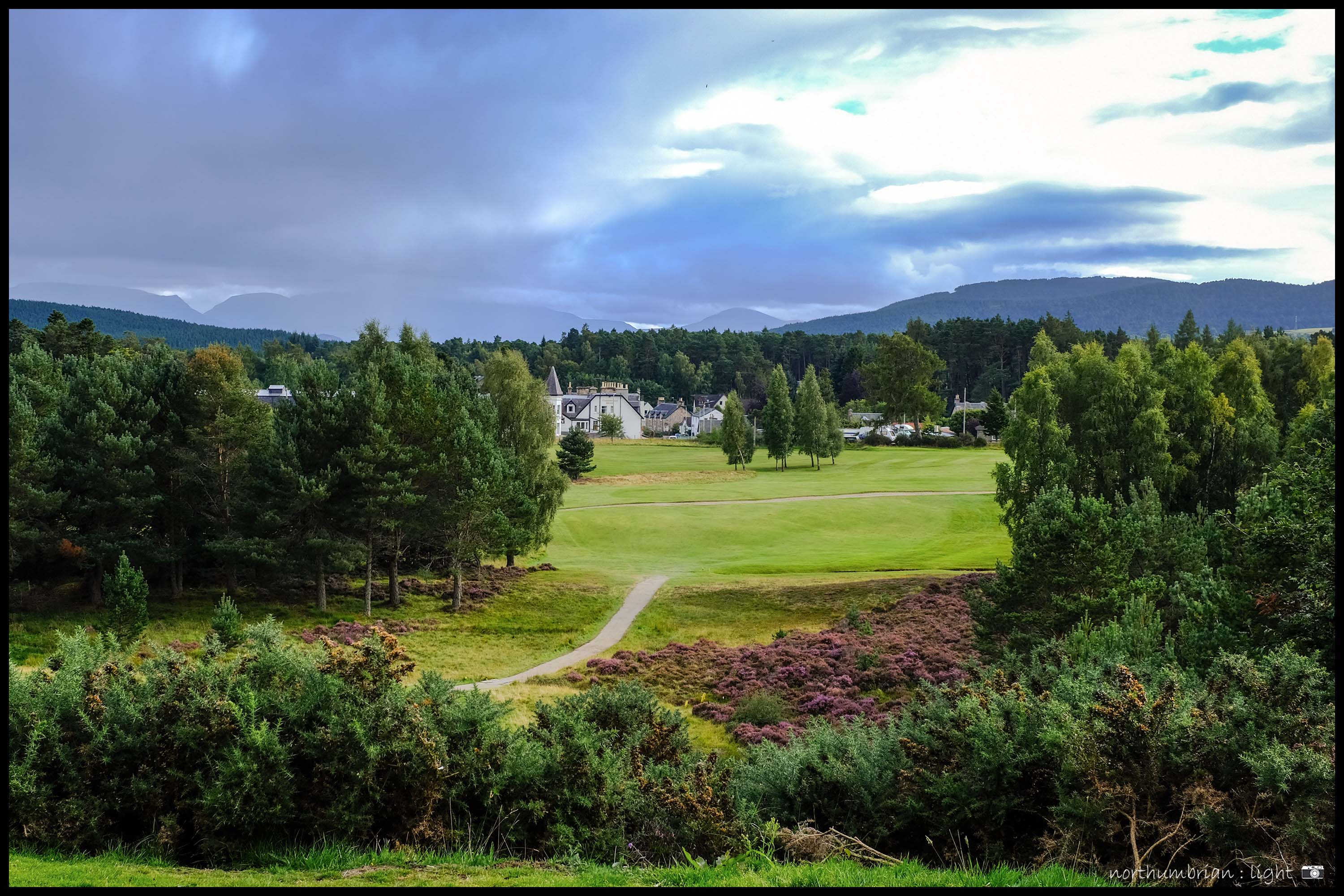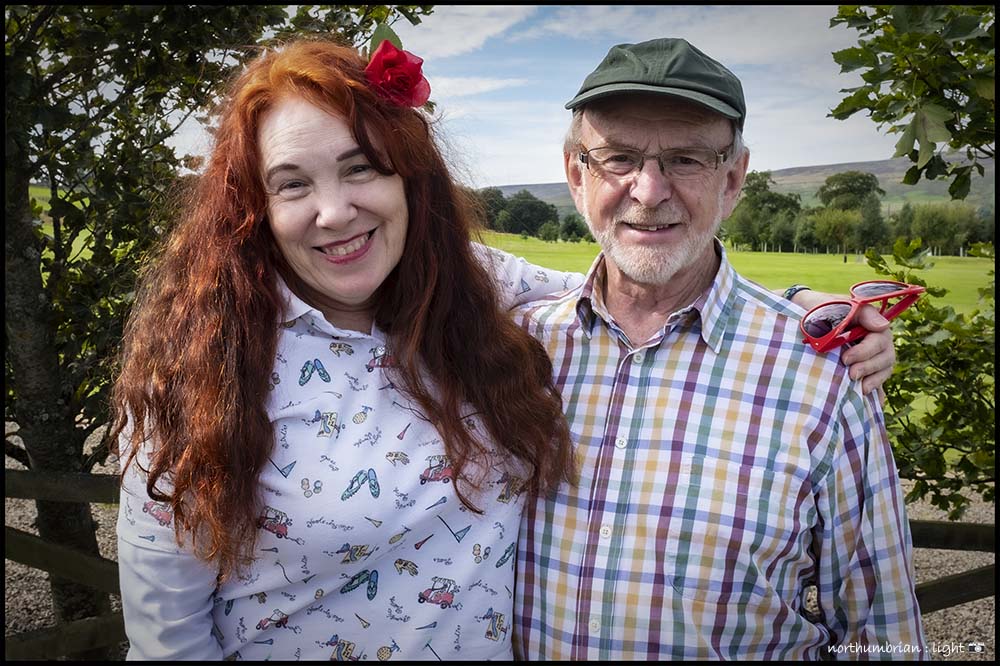I was delighted to contribute to the latest article on Golf Club Atlas – a tour of some of the more quirky golf courses in Scotland and Ireland – Roads less Travelled:
Category Archives: Golf
St Andrews & Anstruther
I guess most golfers have an ambition to play St Andrews, the home of golf. Scheduled to play Anstruther at 13:30 we had some time to spare so we drove the extra ten miles north and spent an enjoyable hour gongoozling at St Andrews’ first tee and the eighteenth green.
Much as I would like to play the Old Course, I have some reservations. I would feel obliged to use a caddy and I would imagine a continuous analysis of my fragile game by an old hand who has seen it all before, not least the incompetent hack. There is also the gallery, especially at the eighteenth where a wayward finish is all too publicly on display – and always remember Doug Sanders.
This good man cleared the Valley of Sin but, his ball ran through to the rough at the back of the green and found a testing lie which he wanted the ‘gallery’ to know about. Despite this he chipped to within feet of the pin – a fine effort in spite of the attentions of the man with a camera.
The final drawback is the cost – all well and good if you are in reasonable form but a recipe for certain depression if you are having a poor day. Nevertheless, I suppose it has its compensations – later that day when I parred the eighteenth at Anstruther, there was nobody present to admire my final putt, just my good buddy who slightly resented me adding salt to his wounds.
Anstruther proved to be everything I had hoped for – a fine course with some challenging holes, not least, the three consecutive par 3s at the southern end of the course. The first of these, the fifth – The Rockies, was deemed the toughest par 3 in Britain in 2007 by Today’s Golfer. Ian parred this on the back nine, something I feel obliged to mention 😉 And, yes, but for Covid, Anstruther would have been in the sequel.
Tomorrow we head south again – this time to Jedburgh, a course I have not played since it was extended to eighteen holes. If the sun stays out, it should be a fine finish to an excellent three days of escape.
Gifford
First golf impressions are influenced by the weather and how well you play. The skies over Gifford were an unbelievable blue and the scoring surprisingly good. Consequently I consider Gifford to be a spectacular golf course. A parkland layout surrounded to the northwest by Blawearie Wood and in the lee of the Lammermuir Hills, it is well presented with large, immaculate greens. The Speedy Burn runs across the course and comes into play at the second, seventh, eighth and ninth holes. The small but tidy clubhouse could feature in George Clarke’s Amazing Spaces. At not far short of 6000 yards off the yellows with just three par 3s (6000+ off the whites) good distance off the tee will help post a reasonable score.
A nine-hole course, there is some variety on the back nine: the first is a par three whereas the tenth tee is at the edge of the car park – this being some 200-yards distant from the clubhouse where the first tee is positioned; the fourteenth par 3 is significantly shorter and easier than front nine fifth; the eighteenth tee is set back some distance in a small copse and turns the front nine par 4 ninth into a par 5. The narrow perspective from this last tee presents a challenging finish.
Had Covid not interfered with travel plans in 2020, it is almost certain that this course would have featured in the sequel – Golf in the Wild – Going Home. If asked what has been the greatest influence on writing the sequel, I would have to respond ‘Events, my dear boy, events‘ (H. Macmillan). As I head for Anstruther with my long time golfing buddy (Ian the L Plates – see book #1), I feel certain the same will apply.
First draft of the new cover
The sequel is progressing – the text is currently undergoing review (by three separate editors!), I have completed the introduction and acknowledgements (my word what a lot of help I have had) and, here is the first draft of the new cover:
The eagle-eyed might notice a ‘slight’ price increases and the fact that the ISBN is the same as book 1. Some things might change before publication 😉 As an aside – in the 21st Century we are brainwashed by advertising. I keep seeing the Costa coffee sign on one of the back cover images!
Golf in the Wild and Kindle
The first print run of 1000 books has nearly sold out and so I have reached a decision point – reprint or make available online. I have always much preferred print media to e-books and it was this that motivated the high production standards for Golf in the Wild. It was the unknown book I wanted golfers to find on the shelf at Waterstones which would immediately inspire them to rush to the check-out. Not that Waterstones was ever persuaded to stock the book but, therein lies another story.
The sequel, Golf in the Wild – Going Home, is due for publication in September 2021. At the same time I will reprint the first book. With a gap in availability of several months, this seemed an opportune time to experiment with Kindle. After several frustrating hours with Kindle Create, I eventually decided to upload as a Print Replica which, in plain English, means that the content appears exactly as it does in the printed book format. Retention of the original formatting and imagery means it is a large download – more megabytes for your buck. The Kindle price is £3.49 in the UK, with equivalent pricing in other worldwide territories – Kindle Unlimited members get to read if for free.
Going Home – progress
The text is finalised, the route set in stone, the website partially updated and the target for publication forecast as September 2021, to coincide with the Golf in the Wild Open at Allendale (date to be confirmed). The journey is not quite as planned. World events intervened, the Scottish border closed and the trip to Anstruther abandoned. This is a major disappointment as it would sit nicely in the return journey and the setting for the course looks wonderful – see Anstruther Golf Club’s gallery. Consequently, there is a journey of 108 miles between Blair Atholl and Lauder without a golf ball being struck – needs must. Perhaps this is the basis for a trilogy – a return journey, playing all the good courses I missed the first time around: Golf in the Wild, Going Back. Will the Good Wife tolerate yet more golfing adventures, I wonder.
Portmahomack
Chapter 7 of the sequel will take the reader to Portmahomack golf course and the far eastern reaches of the Tarbat Ness peninsula. Despite its easterly location, Portmahomack is famed for its sunsets – uniquely on the east coast, it is a fishing village which contrives to face west.
My youngest has recently produced the image for the chapter heading which features a SEPECAT Jaguar, the British-French jet attack aircraft which was in service with the Royal Air Force and a familiar sight above Portmahomack in the 1970s. As luck would have it, I am in contact with one of the pilots who flew these remarkable machines – Wing Commander Chris Barker RAF (ret).
In the 1970s aircraft navigation systems were not as advanced as we might imagine and finding nearby Morrich More bombing range was assisted by Stevenson’s maritime creation, the Tarbat Ness lighthouse … “we would fly over the lighthouse to get a fix, the most accurate way to do so and find the target for the Jaguar. It had an early inertial navigation system which was prone to drift and which needed frequent updates”. As for that all-important variable, speed … assuming a direct track of 12 kilometres (6.5 nautical miles) from the lighthouse and a level attack (called laydown) at 8 nautical miles a minute, the time to reach to reach the target would be about 49 seconds. They were not hanging about.
Carrbridge
You don’t have to be Inspector Clouseau to realise that, while Golf in the Wild is written as one long glorious journey of golfing delights, the reality is that it is ‘researched’ over several years and many different trips north. As I progress towards completion of the sequel, there has been a longstanding gap between Cullen and Blair Atholl. Heading north on an annual visit to Traigh, I had to take the opportunity to find the missing link. It was a half remembered conversation with our greenkeeper and club secretary, Neil, that went something like “have you not played Carrbridge, it’s first class” – the implication being that any itinerant golfer worth his salt could not possibly have passed it by. I confessed that I had not.
Neil was not wrong. Immaculately presented, a sensible length with nine very different holes and each one imprinted on my memory. And here’s the thing – clubhouse door to clubhouse door, give or take an inch or two, it is exactly half way between Cullen and Blair Atholl – 56.3 miles from Cullen to Carrbridge and 56.2 miles from Carrbridge to Blair Atholl. In every sense, this course was predestined for Golf in the Wild – Going Home.
A late afternoon round was played under ever changing skies but rain did not spoil the experience. I will save a full description for the book but these are some immediate memories:
- The first would be a fine introduction to any course – blind from the tee, I guess a long hitter might find the diagonal burn about half way along the fairway but, for an average Joe, it presents no problem. A neat wooden bridge, a ‘bell’ inspired by the J. Arthur Rank gong, it is a visual delight all the way to the green.
- At the second I clipped a drive an unusually long distance, assisted by a down-slope, it ran too far left towards the first fairway and the burn. From down there and probably elsewhere, what to do next had me perplexed. Protected by tall trees left and right, heavy rough and minimal fairway, the green is nestled in a dip out of sight. I could spend a life time trying to master this hole – every course should have one.
- The third is more straightforward but the fourth is protected by another burn which looks too easily driven. From an elevated tee the fairway heads down hill and slowly but surely, the once visible pin disappears from view.
- The fifth and sixth play across the top of the course – a birdie at the fifth at first attempt and a par at the sixth made for one happy golfer – modern course designers take note.
- The seventh and eighth are both from gloriously elevated tees – there is real satisfaction in the soaring, high-flying ball that descends in slow-motion to the centre of the fairway. The seventh green is on a plateau at more or less the same elevation as the tee so there is march down into the valley and a march up again. The bank in front of the green looks deceptively close so, sad to relate, I selected a mid iron and left myself too much to do with my second – a recurring problem. The eighth, a par 3, looks straightforward except for a house encroaching on the eye-line to the left. Which tolerant soul lives there, I wonder.
- And then to the ninth – a steep climb to another elevated tee with a fine view of the Carrbridge Hotel and the mountains beyond – it’s a tough finish. A dogleg, 231 yard par 3, the green invisible from the tee. As the final act to a golf course, it takes some beating; another hole I could take a life time to master. Carrbridge has it all.
The Route Home
The route for the first book determined itself. The 9-hole courses on the Scottish northwest coast are limited so, it was a simple task of joining the dots from Lochcarron, northwards to Durness. Returning south, beyond Perth, has been an altogether different proposition, there were simply so many choices. In the end, it came down to expediency – I have been lingering in the north for too long and I need to get home. There are fine 9-hole courses in the Scottish Borders I have played for years so, it seemed logical to return via familiar roads. I then realised there was a direct connection between my final destinations and roads didn’t enter into it – the Lauder Light Railway, North British Railway, the Border Counties Railway and the Hexham & Allendale Branch Line. I simply needed to board an imaginary train and I would be home, where ‘home’ is the old Allendale course at Thornley Gate.
Golf in the Wild – Going Home will visit the following courses, with many a diversion along the way: Reay, Wick/Reiss Links, Lybster, Bonar Bridge, Portmahomack, Castlecraig (closed), Fortrose & Rosemarkie, Covesea, Cullen, Rothes, Blair Atholl, Lauder, Melrose, Newcastleton and Allendale (Thornley Gate).
The eagle-eyed will spot a few 18-hole courses among this selection. In the case of the far north, this is simply because there are no 9-hole courses to play – and anyway, Reay and Reiss Links are suitably wild and simply superb.
The old course at Thornley Gate was only a half mile walk from the station, a good deal closer than the centre of Allendale after which the station was named (Catton would be more appropriate). This was a problem repeated along many stretches of these old lines – stations sited too far from the communities they served. When bus services were introduced, rail passenger numbers inevitably went into steep decline.
Roxie Rogers
It was a delight to meet the multi-talented Roxie Rogers from Nashville at Allendale GC this morning – artist, singer, designer, writer and avid 12 handicap golfer – https://roxierogers.com/
It was interesting to find out that Roxie became aware of the course from my article in the Northumbrian magazine which I think was published as long ago as 2016. These things have a shelf-life well beyond anything we imagine; more evidence that trying to understand the benefits and long term consequences of any form of PR is an almost impossible task.
Roxie and her partner increased the US footfall by 40% this year, following in the footsteps of the Dutton Brothers in May. This in turn has resulted in an interview about Golf in the Wild and Allendale at the US website, Golf Club Atlas. I will update this post with the link when it is published over the next few days. As Roxie, said – the world is just getting smaller and smaller.

